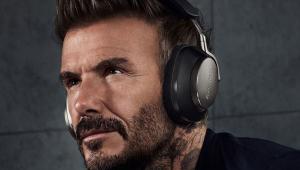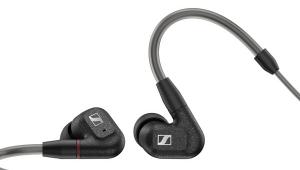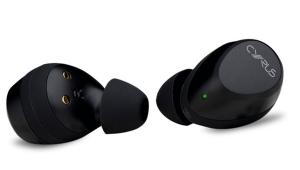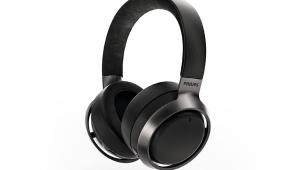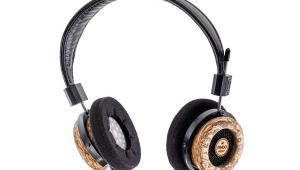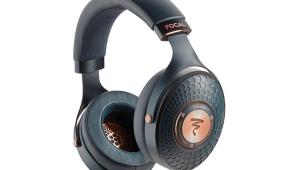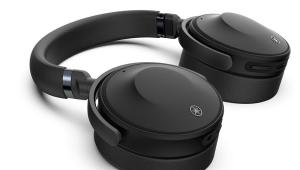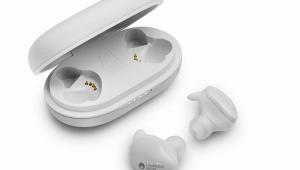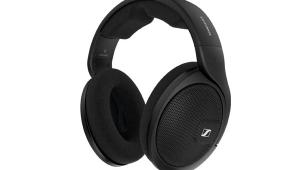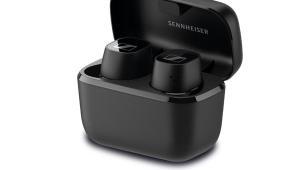Sennheiser IE 900
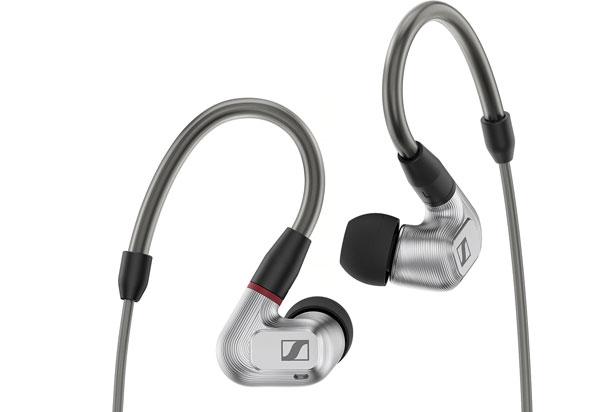
 News that Sennheiser had sold its consumer division to Sonova Holding AG came just days before the announcement of the IE 900, and it’s difficult to separate the two. The name will continue as before and there will be future product that involves input from its engineers, but the IE 900 arrives feeling like the last product done the ‘old’ way.
News that Sennheiser had sold its consumer division to Sonova Holding AG came just days before the announcement of the IE 900, and it’s difficult to separate the two. The name will continue as before and there will be future product that involves input from its engineers, but the IE 900 arrives feeling like the last product done the ‘old’ way.
Fittingly then, it is also a flagship. It goes straight to the top of the in-ear range, augmenting (but at this point, not replacing) the IE 800 S (HFC 434), which previously fulfilled this role. In keeping with other Sennheiser in-ear designs, the IE 900 eschews armatures and multiple drivers for a single dynamic driver in each enclosure. This is called the X3R and builds on the ‘Extra Wide Bandwidth’ principles of earlier designs. It is 7mm in size, which – even judged by current standards – is pretty small.
Key to the driver is a trio of Heimholtz resonance chambers machined into the aluminium body of the earphone between the driver mount and the nozzle. Additionally, a completely separate back chamber helps with bass response. These, working in conjunction with an acoustic vortex principle, give the IE 900 a claimed frequency response of 5Hz-48kHz. This is achieved with a benign impedance of 16ohm and a sensitivity of 123dB/1Vrms, ensuring it should be easy to drive.
The housings terminate in an MMCX connector and three different cables with 3.5mm single ended, 2.5mm balanced and 4.4mm balanced terminations come supplied.
I can’t fault the design and build. Everything feels more engineered and less artisanal than can be the case from smaller companies and this inspires confidence. The only slight downside is that the newer zip case is not as nice as the design for the IE 800 S, but it offers effective protection.
Sound quality
I have the IE 800 S to hand and so am able to make a direct comparison between the two. Using the IE 900 connected to Chord Electronics’ Mojo (HFC 405) and Poly (HFC 431) combination is illuminating. Listening to Dodie’s Hate Myself, the IE 900 shows the same effortless coherence across the frequency response. The simplicity of this configuration allows for the tonal beauty of the track to be the main focus. Tiny little details are effortlessly picked out of the mix without ever being distracting.
Where the IE 900 really makes progress, though, is the scale and impact it possesses. The IE 800 S has never felt lightweight, but listening to Typhoons by Royal Blood on the 900 is an altogether weightier and more forceful experience. Key to this is that it is still an exceptionally fast and controlled-sounding earphone. Bass starts and stops with precision and it never dominates the performance. Going back to the IE 800 S afterwards feels far less impactful.
The real step forward is with the balanced cable options. Connected to an Astell&Kern KANN Alpha (HFC 473) via the 4.4mm connection, the IE 900 sounds superbly three dimensional. It can be used to play something both boisterous and large scale like the John Powell score to The Bourne Identity and it never loses the feeling of cohesion and order required to make sense of the music, and it does a superb job of pushing information in front of you. You could use it with single-ended connections all the time and never feel short changed, but there’s more performance to be had out of it.
Conclusion
I’m confident that Sennheiser’s new arrangements will turn out to be fruitful, but if the IE 900 is to be the end of an era it should be seen as the company going out on a high. This is a staggeringly talented in-ear and asks very little of you or the partnering equipment to sound sublime. It isn’t cheap, but the level of engineering means this is one of the very finest earphones anywhere near the price. ES
DETAILS
Product: Sennheiser IE 900
Type: In ear, dynamic driver earphone
FEATURES
● 7mm driver in resonance controlled chambers
● Detachable balanced and unbalanced cables
 |
Inside this month's issue:
Q Acoustics 3020c standmount loudspeakers, Perlisten R10s active subwoofer, Quad 33 and 303 pre/power amps, Acoustic Solid Vintage Full Exclusive turntable, newcomer Fell Audio Fell Amp and Fell Disc and lots, lots more...
|


